The Milky Way and the Andromeda galaxy (M31, NGC 224) are the closest to each other in the so-called Local Galaxy Cluster Group. Now the Andromeda galaxy can be seen with the naked eye, like a tiny dot in the sky. But in three billion years it will be so clearly visible to the naked eye that it will even be possible to see individual spiral arms in it.
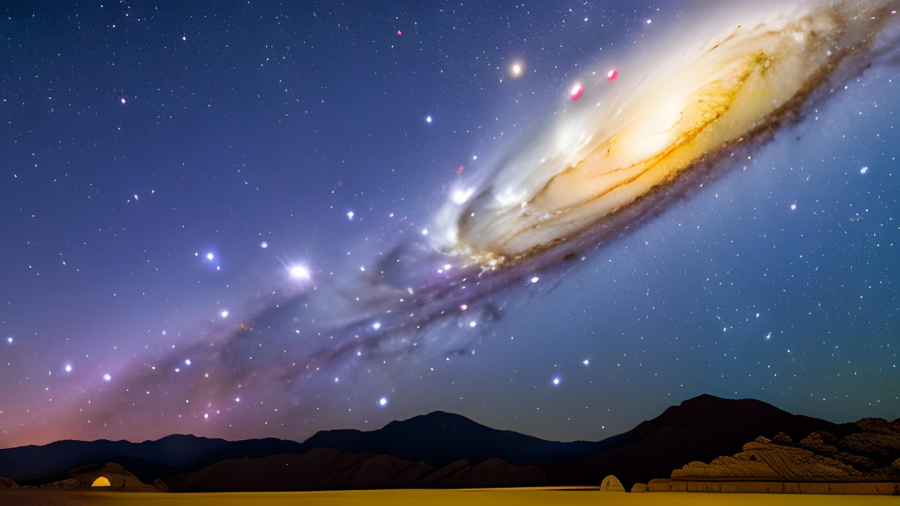
Scientists have calculated that both galaxies will collide soon, because they are rapidly approaching at a speed of 100-140 km/s. Accordingly, the galactic “accident” will occur in about 3-4 billion years. This event will have catastrophic consequences for both: The Milky Way and Andromeda will first be torn apart by the gravitational interaction, and then merge into one huge Milkomeda galaxy with a bright core.
NASA and ESA scientists conducted computer simulations and showed how this large-scale event would look from Earth. It is unlikely that our planet will be a hospitable place at that time, so it is very interesting to fantasize about this topic now, while it is safe.
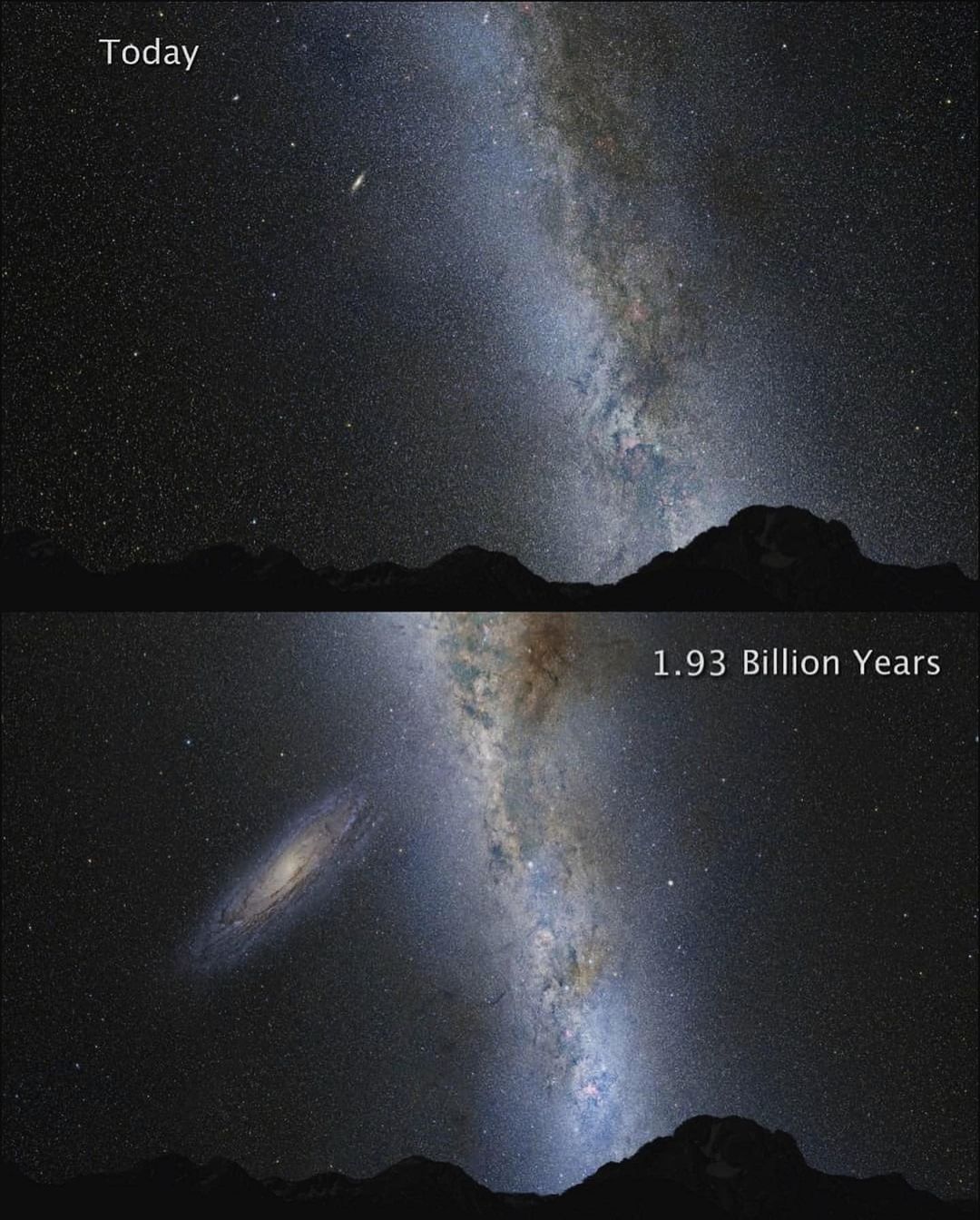
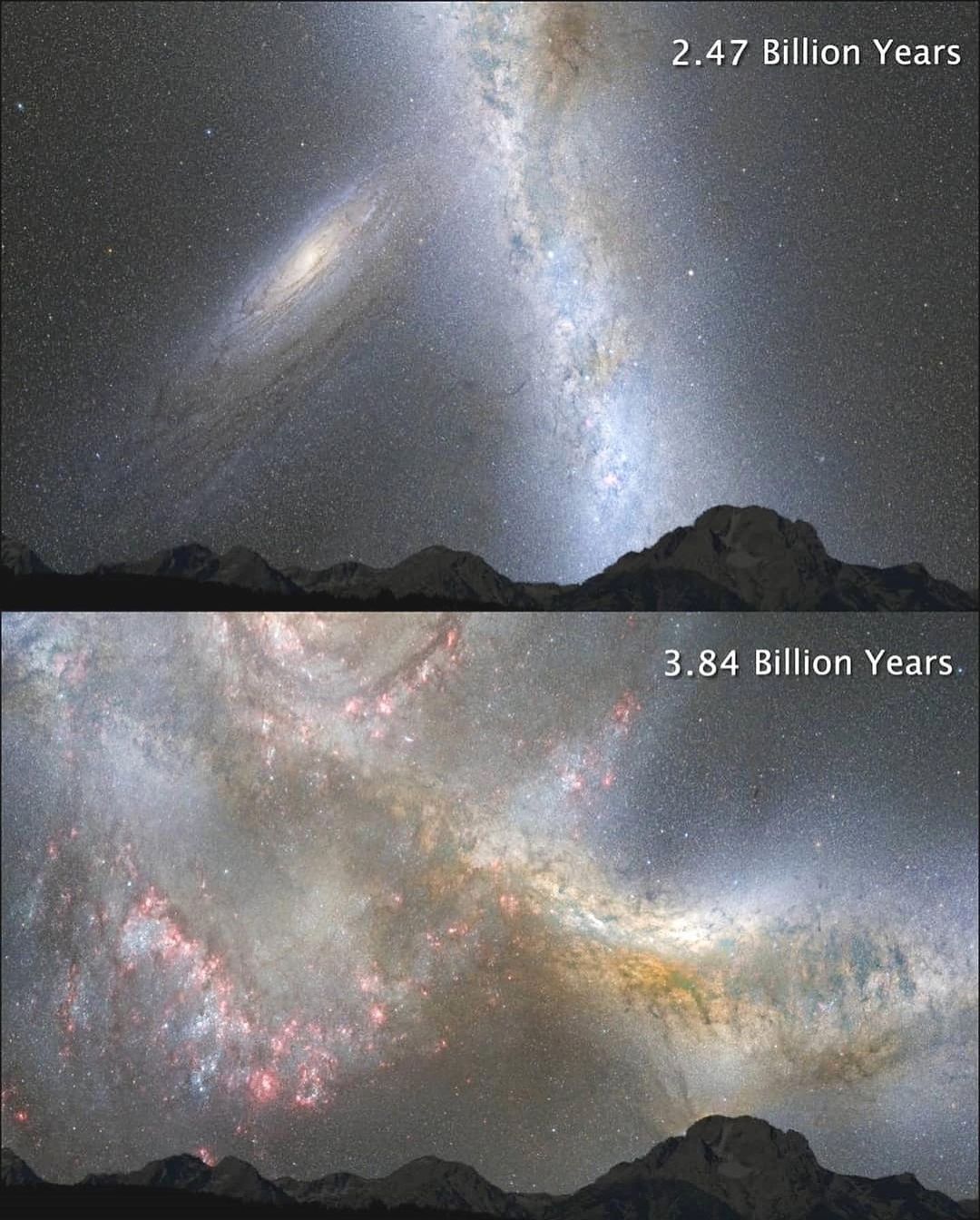
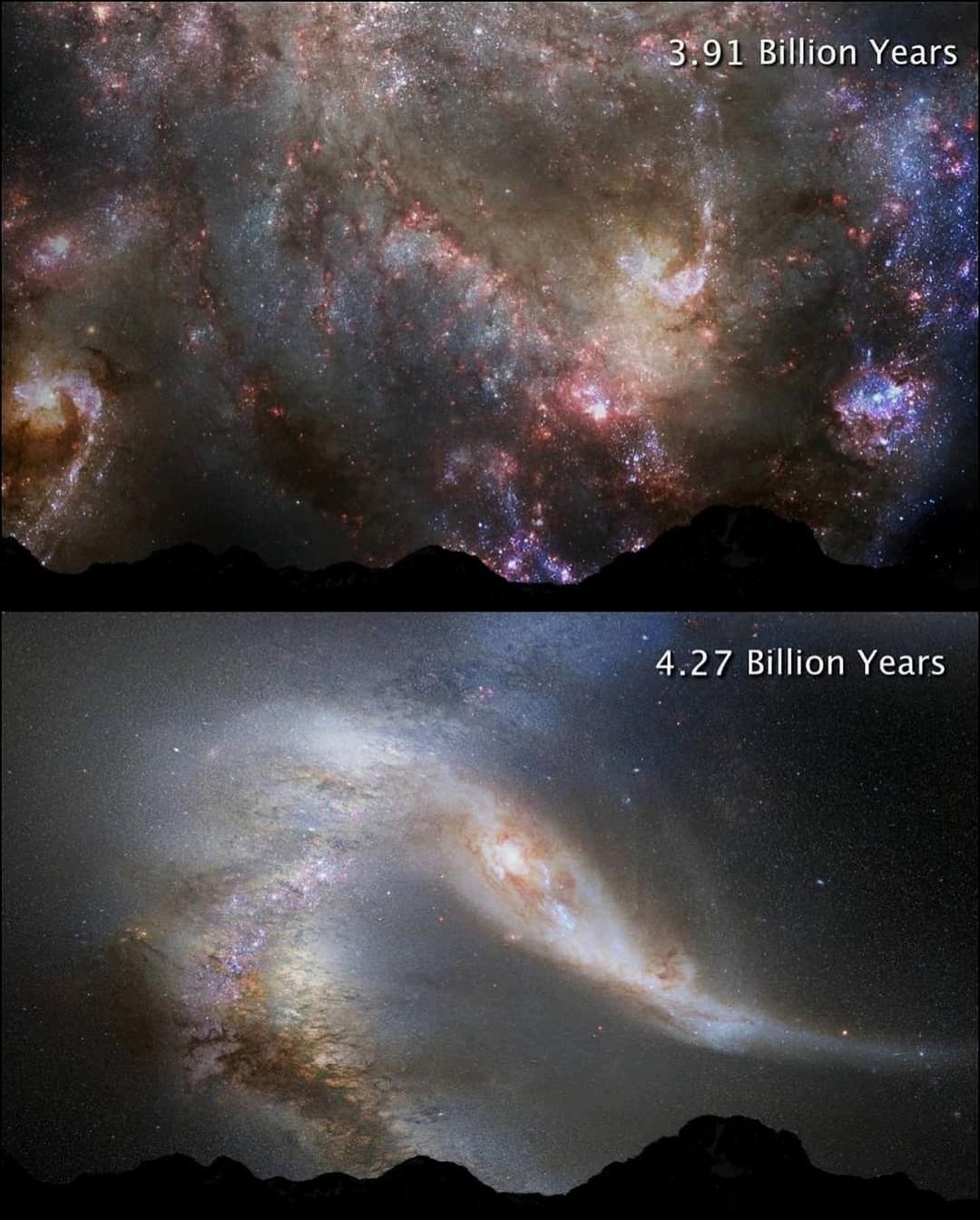
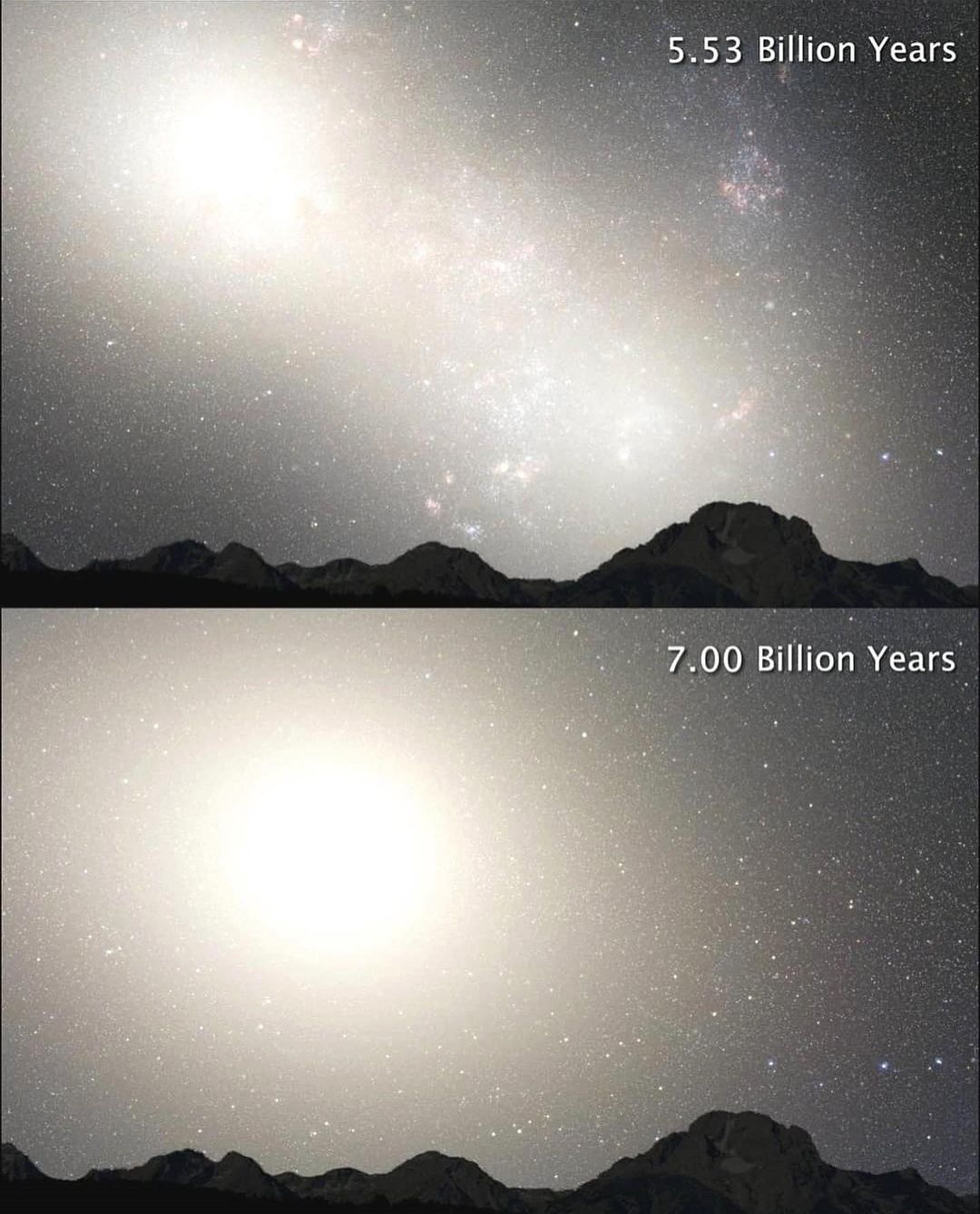
According to forecasts, as a result of the collision of galaxies, our Solar System will not be destroyed, although it will be even further away from the new galactic center than it is now. At the beginning of the collision, our star will not yet be a red giant star, but it will become bright and hot enough to fry the surface of the Earth. But at the end of the merger of galaxies, our Sun will pass the stage of a red giant, shed its shell and turn into a planetary nebula with a white dwarf in the center. Unfortunately, our planet will die before the Sun. During the inflating of the solar atmosphere as a result of the transformation of the star into a red giant, the planet will be absorbed by the luminary.
As for the other objects, the stars are located quite far from each other, so it is unlikely that any of them will collide separately. The whole process will be completed in 7 billion years. At that time, the sky will be completely different – brighter due to the greater number of stars that will be attracted to the active galactic center. It is also possible to combine the Milky Way with another neighboring galaxy — the Triangulum Galaxy (M33), possibly even earlier than with Andromeda.
Earlier we reported on how a giant oxygen nebula was detected near the Andromeda galaxy.
Follow us on Twitter to get the most interesting space news in time
https://twitter.com/ust_magazine

